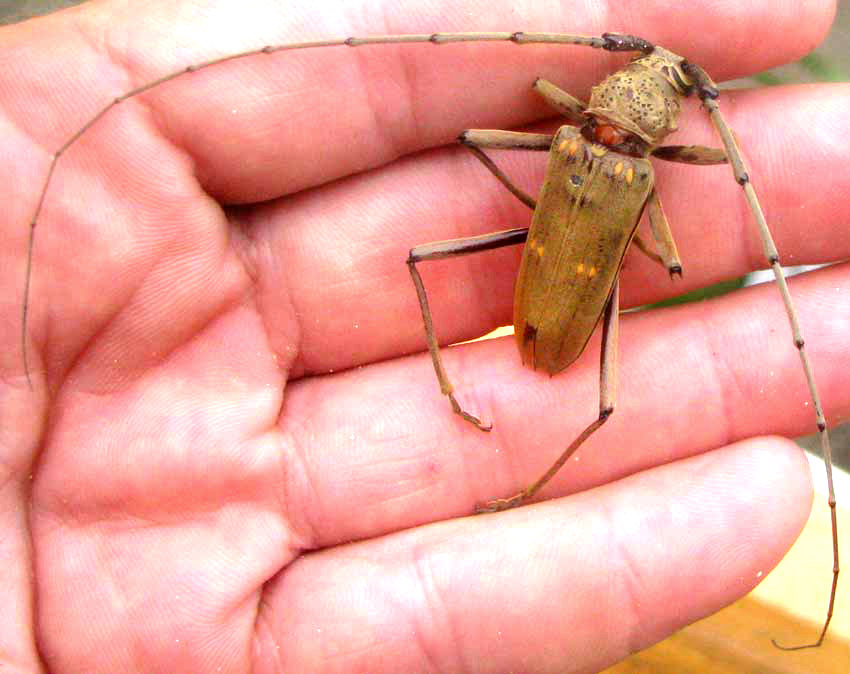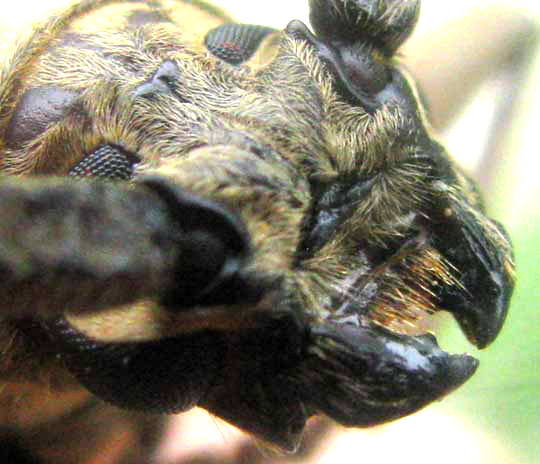Excerpts from Jim Conrad's
Naturalist Newsletter

from the July 10, 2011 Newsletter issued from Mayan Beach Garden Inn 20 kms north of Mahahual; Caribbean coastal beach and mangroves, ~N18.89°, ~W87.64°, Quintana Roo state, MÉXICO
LONGHORNED BEETLES WITH REALLY LONG HORNS
Here during the early rainy season biting flies and mosquitoes are out in force, so regularly the tourist area is fogged with organically based, biodegradable, pyrethrum-based insecticides. Of course many insects other than biting flies and mosquitoes are killed. Among the most conspicuous found lying back-up on the ground these days are longhorned beetles like the one shown above..
A close-up of the head area showing black, many-faceted compound eyes above the antennae and surprising facial hairiness can be seen below:

Longhorned beetles are members of the Longhorn Beetle Family, the Cerambycidae, of which about 20,000 species are described. The horns in the name refer to the very long antennae species in the family usually have, and our pyrethrum-killed species is one with especially long antennae. Volunteer identifier Bea in Ontario thinks we may have a member of the genus Eburia.
Whatever the species, longhorned beetles typically produce larvae that bore into wood, either living or dead. Some species do serious damage to wood buildings, one having earned the common name of Old-house Borer. Asian Longhorned Beetles, now introduced into the US and Europe, pose a big threat to healthy living trees, both in natural and suburban areas.